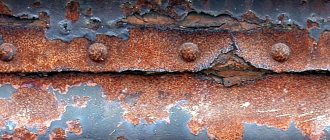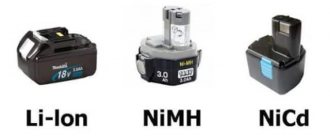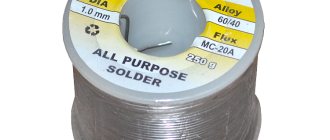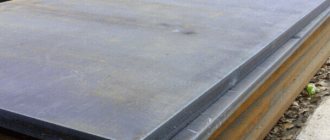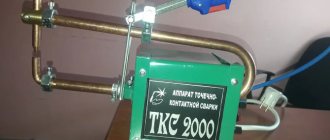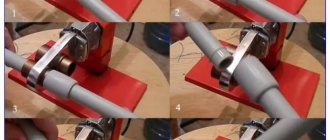Plexiglas is considered one of the most popular transparent materials, which is used for various purposes. It can be used to make products of various shapes. You can see it in any office or retail space: information holders, stands, boxes, etc. However, this material can break. And home craftsmen need complete information on how to handle it. To fix it, you need to know how to glue plexiglass. There are several adhesive mixtures that differ in characteristics, performance, and features of working with them.
Composition of plexiglass, what is it
PLEXIGLAS® GS is produced by casting, and PLEXIGLAS® XT by extrusion. The simple name is plexiglass (plexiglass). There is no difference in machining of both types. Plexiglas is a synthetic material. It is made from acrylic resins to which additional components are added.
The result is a material with high levels of strength, reliability, and translucency. To change the characteristics and appearance of the finished sheets, during manufacturing the mixture is saturated with stabilizers, dyes, and plasticizers.
Ready-made material is used in the following areas:
- Manufacturing of lamps.
- Creation of interior partitions, domes, pedestals, decorative elements for interior decoration.
- It is used to glue the walls of shower stalls, swimming pools, and bathtubs.
- Creation of shop windows, aquariums, advertising stands, signs, banners.
Shelves, stands for consumer electronics, and transparent tables are often glued together from plexiglass. To understand how good a material it is for use, you need to understand its strengths and weaknesses.
Advantages:
- High strength index. In this parameter, plexiglass is superior to ordinary glass.
- Low specific gravity. Thanks to this, there are no problems with installing bulky panels.
- Does not collapse under the influence of sunlight, moisture, or detergents.
- High transparency rate.
Flaws:
- Low wear resistance. The surface is easily scratched and damaged by sharp, rough objects.
- Does not withstand prolonged exposure to open flame.
- In order for a product made of this material to retain its original appearance over a long period of time, it is necessary to regularly wipe it with a cloth moistened with a cleaning solution.
When a product breaks, you need to know how to glue the plexiglass together in order to restore the integrity of the item, and then use it further.
Fighting scratches on plexiglass
How to cut plexiglass at home
Even deep scratches on polycarbonate can be repaired. This will help:
- Two types of sandpaper: 800 and 1500 grit.
- Polish, GOI paste is excellent.
- Natural polishing material.
We clean a sheet of polymer plastic that has been previously washed with a mild detergent and moistened with water using 800-grit sandpaper; this will help get rid of large scratches. Then we sand it using 1500 paper. Now the sheet is prepared for polishing. Scratches may be minor and you may need to resort to sandpaper, in which case there is no need, polishing alone will be enough. We hope we were able to answer the question: “How to clean plexiglass?”
What kind of glue is there for plexiglass?
Glue for plexiglass is selected depending on the wishes of the consumer.
new one-component Wiko Plexy adhesive for plexiglass (plexiglass)
There are two types of glue used for repairing and restoring the integrity of products:
- An adhesive mixture of acrylic with a solvent is used for extruded (cast) acrylic (aka plexiglass, plexiglass). Glue for professional work. When two identical components are combined, under the influence of the third active substance, a strong connection of the bases occurs due to the dissolution of the surface molecular layer of plexiglass. The gluing is monolithic. There are some nuances. Although this group is intended directly for gluing plexiglass (plexiglass), not all adhesives in this group will be able to connect any types of these materials. This is very important, there are exceptions, so you need to be careful when selecting the composition for certain brands of PLEXIGLAS®, which is the generic name of the brand.
- Two-component adhesive based on epoxy resin or cyanoacrylate. With their help you can quickly glue individual parts together. Suitable in some cases, and can be used for small work areas.
Strong seams can be made using caustic acids.
Household adhesives for joining plexiglass are divided into two groups according to the principle of action:
- The first include active substances that are applied to the joints before gluing. Surfaces melt. The master glues them together while the material is liquid. After drying, a monolithic seam is formed.
- Compositions that form a connecting layer between individual parts. A less durable seam is formed than when the surfaces being joined are melted.
In order not to make a mistake when choosing, you need to consider the most popular products for gluing plexiglass.
new two-component adhesive Wiko Dual Glue for plexiglass (plexiglass)
Acrifix 116 glue
Glue for plexiglass manufactured by Acrilfix, which produces high-quality substances used when joining various materials. Product 116 is a clear, thick mixture (more viscous than Acrifix 117) that has the consistency of a pourable resin. Packaged in tubes of 100 ml.
Used for gluing rough parts that have uneven edges. Effectively fills voids formed by chips and creates a uniform surface. One-component adhesive. Hardens due to the evaporation and absorption of solvents by the parts being joined.
Acrifix 117
If a person does not know how to glue plexiglass, any experienced craftsman will tell him Acrilfix 117 glue. This mixture is considered the best for gluing acrylic-based materials. He has a number of strengths and weaknesses.
Advantages:
- High strength of the finished seam.
- Dries quickly.
- Lowest level of toxicity compared to analogues.
- Long shelf life.
- Penetrates small cracks and fills them to the base.
- The transparent seam is practically invisible on the total area of the glued surface.
Flaws:
- Very high price.
- Rarely found on the shelves of construction stores.
- It is impossible to buy a small container. The standard packaging size is 1 liter.
Experienced craftsmen recommend mixing Acrylfix 117 with 116 (10/1) to reduce the consumption of expensive glue. In addition, the mixture better fills the voids of microcracks. The quality of the seams does not deteriorate.
Glue Colacryl 20
When gluing plexiglass, craftsmen often use Colacril products. It costs less than Acrylfix, however, its properties are close to expensive mixtures. Item 20 is a flowable adhesive that can be used to create clear, strong, durable seams. Similar in action to the previous brand, but cheaper.
Colacryl 30
It differs from name 20 in consistency. It is thicker, so 30 is mixed with 20 to get the adhesive of the desired thickness. The disadvantage of adhesives from this company is that they crack at the bend. This violates the integrity of the connection and worsens the appearance.
Although this may not be considered a disadvantage, microcracks can appear after any glue if the technology is not followed.
BRAUBERG glue
This transparent adhesive is universal for a large number of different materials that differ in their structure. Sold in a package called a show box. Glues and joins products made of wood, metal, PVC of any hardness, polystyrene, porcelain, ceramics, plexiglass, glass. Also glues rubber, felt and leather objects.
Advantages:
- Versatility.
- Water resistance.
- Elasticity of the taped seam.
- Bonds porous materials.
- Glues plexiglass and plain glass.
- Symbolic price.
How to choose glue for glass
Glass has low adhesion ability. Therefore, joining such surfaces is difficult. The fragility of the material further complicates the task. To glue glass objects, you need a special substance that has certain qualities:
- High adhesion for connecting objects that experience significant mechanical stress in everyday life.
- Transparency so that the resulting joint becomes invisible. When connecting small parts, this quality is even more important than strength.
- Ability to dry in a short time.
- Increased thickness so that the final joint becomes elastic.
- Ability to withstand significant temperatures, as well as frost and heat.
- The ability to repel moisture when in a humid environment or when using products in atmospheric conditions.
- Environmentally friendly and safe for nature.
It is optimal to choose transparent products for work. They can easily neatly connect small parts of the decor. It is also worth considering the physical parameters: transparent compounds are suitable for combining smooth objects, but if the surface is corrugated, a stronger formula will be required. When it is necessary to connect parts of an aquarium, choose a product that does not contain antibacterial components and will not harm the fish. Durable compounds are chosen to connect painted surfaces.
Polymer glue
Hardening of this composition is carried out by exposure to ultraviolet radiation. In this case, gluing is possible only if at least one of the parts being connected allows light to pass through. To improve the process, the combined planes are exposed to a special lamp until the seam hardens. When gluing with this substance, a transparent joint is obtained that can withstand temperature changes, exposure to moisture and mechanical stress.
Important!
This substance is used to work with jewelry, shop windows and stained glass. The connection is very strong. The only drawback of the glue is the low hardening speed.
Silicate glue
The main ingredients of this substance are sealants and silicones. It is often used in construction. Thanks to the large number of shades, the connecting joint is made invisible or, on the contrary, its decorative effect is emphasized. This composition is often used in needlework. At the same time, for a high-quality connection, you need to apply a larger layer.
Cyanoacrylate glue
This composition is also called cold welding. It has excellent adhesion and high drying speed. The result is a strong and very durable seam. Cyanoacrylate glue is used to join painted objects or to glue glass to other surfaces: metal, wood or plastic. The disadvantage of glue is that it breaks down when exposed to water.
Household adhesives
This group of adhesives includes PVA, Moment, BF-2 or BF-4. In this case, the stronger the connection, the more the surfaces are compressed after applying the glue. It is difficult to connect objects with BF glue, since this product requires high temperature, and glass may not withstand it.
Important!
When using Moment glue, you must first soak the lubricated surfaces for about 20 minutes and only then connect. If you don’t have time to wait, use the “Super Moment” product.
Heat Resistant Glass Adhesive
I use a similar product if the parts, after joining, will be regularly exposed to high temperatures. Such connections can be in an oven, electric kettle or stove. To prevent destruction of the adhesive seam, special reinforcing additives are included in the composition.
Adhesive self-adhesive films
When the question arises of how to glue plexiglass tightly, the master can use good glue, also a homemade adhesive composition, or use self-adhesive film. The main advantage of such a connecting device is the ability to glue identical and different materials. You can find three types of films on the market:
- Material without base. It is a film less than 1 mm thick. Before gluing the working surfaces, the protective sheets used during transportation are removed. Suitable for joining perfectly smooth surfaces.
- Films with a thin base. The base reaches several hundredths of mm. It is transparent and does not stand out visually after connection. The requirements for a flat surface are somewhat lower than those of the previous material.
- Film with a foam base. It is a thin double-sided tape that is sold in large rolls. This film can be used to glue any surface, but the bond strength is low due to the foam base.
Each type of film indicates the load it can withstand, service life under normal conditions, and dimensions.
How to glue plexiglass at home
When it is not possible to buy a specialized compound, but you need to glue plexiglass at home, you can use improvised means. When working with homemade compounds, you need to know the safety rules so as not to harm yourself and maintain the integrity of the material.
General technology and principles of gluing at home
In order to glue parts together efficiently and discreetly at home, you need to adhere to the following operating rules:
- The sponge is soaked in gasoline to degrease the surface.
- Glue is applied to both parts; for convenience, it is better to use a regular syringe. First you need to grind off the tip using a whetstone, the angle is made at 90 degrees, this stage will help to avoid splashing of the substance towards the bevel of the needle. Then fill the syringe with the solution. The glue is carefully squeezed out of the syringe into the joining part of the parts securely connected to each other.
- Next, you need to press them tightly together and keep it that way until the setting process begins. In this case, the time varies from a couple of minutes to half an hour depending on the composition used. It is important that the product dries without spreading on the surface when the product is turned over.
To prevent the solution from getting onto other areas, masking tape is first glued to them.
Glue is applied to both parts; for convenience, it is better to use a regular syringe.
How does dichloroethane (DCE) glue?
It is an effective substance if there is no target adhesive to work with. It can be purchased where components for radio electronics are sold. Dichloroethane dissolves the glued material quite quickly, but also evaporates quickly.
There are two methods for applying dichloroethane:
- If the surfaces are smooth, the substance is taken with a medical syringe from a vial of EDC and poured along the contour of the connection so that it reaches the entire depth. The result is a transparent seam without bubbles.
- When surfaces have uneven surfaces, the gluing technique changes. A small amount of sawdust or plexiglass powder is added to a container with dichloroethane. 5 grams of powder per 100 grams of liquid is enough. After a short period of time, EDC becomes a thick mass. Using a metal wire, apply the mixture to the surfaces to be glued.
When working with dichloroethane, it is necessary to take into account that it is a toxic, poisonous substance.
The gluing procedure must be carried out using high-quality ventilation, with safety glasses and gloves. Keep away from children, do not work near open flame sources. Any person without additional skills can glue two pieces of plexiglass together with dichloroethane.
Security measures
A high content of chemicals can become dangerous for people: firstly, opening the tube each time provokes a slight evaporation that can harm people with a vulnerable sense of smell - to minimize the risk you need to work in a ventilated area; secondly, contact of liquid with the skin can leave a burn or cause poisoning of the body - the solution is to wear gloves and a long-sleeve T-shirt before gluing the plexiglass.
Of course, not every person is susceptible to suffering from contact with glue, but not everyone knows in advance the limits of their body’s capabilities.
It is also recommended to protect your desktop by covering it with a tablecloth or film that you won’t mind throwing away. During free time from needlework, chemical compounds should be stored out of the reach of children and in a place protected from the sun. Products that have expired are prohibited from use.
Gluing plexiglass with vinegar
Not many novice craftsmen know how to glue plexiglass with vinegar essence. Ordinary table acetic acid is not capable of making a strong connection.
To do this you need to use a concentrate.
The liquid is applied to the edges of the parts to be glued. Next, the master squeezes them together. The result is a whole product. The top layer softens, unlike EDC, diffusion occurs slowly. The seam itself will be finally ready only in a day.
Disadvantages of using vinegar essence:
- Low connection strength.
- The seam quickly becomes unusable.
- Cracks appear at bends.
To glue plexiglass products for a short period of time, it is recommended to use vinegar essence with a strength of 30...70%. Do not add plexiglass shavings; the essence will not dissolve them, as it contains up to 30% water. By the way, the concentrate can be replaced with solvents, keep in mind that they can evaporate quickly.
Keep in mind that many cracks will occur near the stress area. This is how plexiglass behaves after treatment with concentrated acetic acid.
We come across vinegar more often in everyday life.
Plexiglas
A food solution of 9 percent vinegar will not help here. You need vinegar essence. And she will not be able to completely dissolve plexiglass. Using 70 percent of the essence you can only slightly soften the surface of the glass. Usually this is enough for gluing two flat surfaces. In this case, the parts to be glued must be pressed against each other with force.
In this way, plexiglass can be glued using the “cold welding” method, when both surfaces being joined are subjected to dissolution, which creates a strong, uniform seam.
If acid or glue is used, other surfaces may be damaged. They produce 3 types of adhesive films, slightly different in their operating principle. Baseless adhesive films are simply a layer of adhesive sandwiched between two transport layers that are removed when used. This material is suitable for gluing two perfectly flat surfaces, with a small expansion coefficient, that is, it is excellent for parts made of plexiglass.
They are followed by a film with a transparent, very thin base. Its presence slightly reduces the requirement for the smoothness of the bonded surfaces, but they still must be smooth. The connection turns out to be less strong; if desired, the elements can be separated in the future.
If you need to glue two uneven surfaces, a film on a thin foam base is suitable. It gives the lowest degree of gluing and if, as a result, the resulting seam must be subject to stress, it is better not to use it.
Bonding plexiglass is essentially no different from bonding plastic parts using a similar method: you need to use glue that dissolves the surfaces and forms a monolithic seam. In this case, even if the product is destroyed, most likely it will break not along the glue line.
One of the most used adhesives at the moment is Artfix. Transparent, less toxic than analogues, easy to use, it is great for gluing any plexiglass parts. The manufacturer allows you to select glue with the required degree of viscosity.
However, it comes in a fairly large volume. It is not rational to buy it for one-time work.
A second glue moment and Cosmofen can glue plexiglass
There are two well-known adhesives that can be purchased at any hardware or hardware store. Both names are similar in their effect, since the composition includes cyanoacrylate. They have a number of strengths, and of course weaknesses. Use in extreme cases.
Advantages:
- Low cost.
- Availability.
- Ease of use.
Flaws:
- Low strength index.
- The seams turn white after drying, which detracts from the appearance of the transparent product.
It is recommended to use these names of adhesives when gluing plexiglass products that will not be subject to loads.
Make your own glue for plexiglass
This process was described a little above. So, in order to repair sheet materials, you can make an adhesive composition with your own hands. If a novice craftsman does not know what glue to use to glue plexiglass, this option is considered one of the best.
To make a homemade product, you need to prepare the following supplies:
- Plexiglas sawdust.
- Dichloroethane.
- Organic solvent.
Mix the solvent with dichloroethane in one container. While stirring the solution with a metal wire, sprinkle small amounts of plexiglass sawdust. Their quantity is set depending on the required consistency. You can do it by eye, nothing bad will happen.
How to glue plexiglass: types and brands of the best products
If you do not have reliable information about the type of polymer, we will select adhesive for plexiglass with the expectation that it is really PMMA. In principle, if you have already dealt with gluing plastic, then there will be no intrigue for you in the question of how to glue plexiglass: the key to the strength of the seam is still in solvents.
A small educational program for those who have not previously dealt with gluing plastics: the most reliable option for gluing polymers is to dissolve the glued edges to a viscous state using solvents and join them until they dry. This way the product turns out to be essentially monolithic, and the seam holds even when the product begins to crack and break in other places.
How to glue plexiglass so that you are pleased with the result? There are several options here.
Factory glue
Of course, the most convenient compositions for working with plexiglass are various types of factory glue. Indeed, why look for something to glue plexiglass with and invent something when everything has already been invented for us?
- Artifix is a reaction adhesive that is currently considered the highest quality and most convenient when working with plexiglass. The seam obtained with its help is strong, transparent and durable, and the toxicity is lower than the toxicity of solvents if the composition does not contain dichloroethane (there are variations without its addition). True, it is better to use this glue for plexiglass if you have a small production: shelling out about 6-8 thousand rubles for a liter package to glue a model together is not very profitable. The most commonly used numbers are 116, 117, 106 and 190, depending on the degree of viscosity you need.
- Colacril is a slightly more budget-friendly replacement for the previous glue, but judging by the reviews, it can’t beat Artifix. The most commonly used numbers are 20 and 30. Different numbers can be mixed to obtain the desired viscosity.
- Cosmofen for acrylic glass is a cyanoacrylate-based superglue, also called liquid plastic. That is, a monolithic connection will be obtained only if the acrylic of the glue matches the acrylic from which the plexiglass is made. Most often it is used when working with plastic windows: it fits perfectly there. In other cases, you will still get a fairly strong and durable seam, and for not the most money. Please note that Cosmofen may require UV curing!
Solvents
You can make your own glue with a completely identical polymer, and this can be done using solvents. Yes, it will set a little slower, but the result will be no worse!
- How to make the perfect glue at home? Dissolve some of your plexiglass shavings in dichloroethane! Yes, the substance is quite toxic and it is better to work with it in the fresh air, but the parts will simply stick to each other tightly!
- If you can't find EDC, you can look for tetrohydrofuran. Depending on the nuances of the composition, it glues some types of plexiglass even better than the famous dichloroethane.
- In desperate situations, you can glue the pieces together with formic acid, glacial acetic acid, or even ordinary vinegar essence. Not with table vinegar, but with concentrate.
In general, parts can be glued together without diluting the chips - if you apply solvent to both parts, connect them and fix them until dry, the seam will again turn out monolithic.
Contact glue
What about the other options? There are a lot of other types of glue that some resource will recommend. Unfortunately, you can’t count on really high-quality seams and “forever” gluing with them, and here’s why.
- Sometimes epoxy resin is recommended for gluing plexiglass, because it really holds the joint well, and is also completely transparent. But it only connects two parts of plexiglass, without turning them into a monolith.
- Adhesive compositions like “Super Moment” do not change the structure of the material and create a very fragile seam: they can only be used for gluing together elements of a product that experiences virtually no load. In addition, when using them, the plexiglass becomes cloudy and the seam becomes very noticeable.
- The usual “Moment” and similar compositions will not last long either: you can only glue with them what you are not going to actively use, and then it will hold up mediocrely.
How to glue plexiglass
For general understanding, the general principle of mechanical processing of plexiglass looks like this. For example, a jigsaw (hacksaw).
Algorithm:
- The stroke function should be set to zero for slabs up to 4mm.
- Medium feed (1st or 2nd stroke) for thicker slabs.
- Saw at high cutting speed (rpm).
- For a circular saw, the speed is 4200 rpm with a blade diameter of 320 mm.
- Only non-offset (!) discs with teeth from 9 to 15 mm.
- Full start-up before cutting begins.
- A tight installation on a protective film (or an aqueous PVAL solution) is required and cannot be removed.
- It is necessary to cool with water or compressed air. It is unacceptable (!) to cut a slab thicker than 3 mm without cooling.
- Carbide saw (disc) or diamond coated.
Anyone can glue plexiglass together. You don't need any practical experience to do this. It is enough to perform a series of actions in a certain sequence.
Step-by-step instruction:
- Wear gloves to avoid leaving greasy marks on the gluing area. Treat the parts to be glued with a cloth soaked in gasoline or alcohol.
- Fasten both parts of the product symmetrically and so that there is a small gap between them.
- Prepare a medical syringe. The needle must be processed with a file to cut the bevel. Its absence will prevent splashing of the adhesive during operation.
- Fill the syringe with glue. Apply an even layer over the gluing area.
- Press the plexiglass pieces together. Leave them in the fixed position for 1 hour.
Masking tape is used to protect the edges of the parts. Gluing of individual elements should take place in a well-ventilated area. After all work, wash off the dirt with clean water or with the addition of a mild cleaning agent. Wipe dry only after all microparticles have been completely removed.
Eliminate dry scrubbing completely.
How to glue plexiglass to metal
Often home craftsmen do not know how to glue plexiglass to metal. To do this, you can use several adhesives:
- Dichloroethane.
- Glue 88.
- Liquid Nails.
Sometimes compounds appear on the shelves of construction stores that indicate that they can be used to glue plexiglass to metal.
Plexiglas to wood
Again, not many people know how to glue plexiglass to wood. When choosing an adhesive to join two different materials, you need to understand that the wrong choice will lead to the formation of a visible seam.
The best adhesives include:
- MAFIX.
- Super glue.
- Cosmofen.
It is advisable to try experimentally gluing unnecessary parts together to see the quality of the connection.
Plexiglas to glass
It is extremely difficult to glue plexiglass to glass. Most often, the compound gains fragility in its properties. Experts recommend using the following formulations:
- COSMOPLAST 500.
- COSMOFEN.
- COSMOFEN PMMA.
These adhesives are very unstable to sudden temperature changes. It is problematic to glue surfaces that tend to heat up during use.
Various gluing options
How to glue plexiglass to metal? A fairly common question, because when working with plexiglass there is often a need to combine it with other materials, in particular metal. There are many universal adhesives, but when choosing, you should give preference to compounds specifically designed for joining metal parts and organic glass.
The most common adhesives are:
- "moment". The easiest way to connect parts made of different materials. As the name suggests, its main advantage is the fast, almost instant connection of surfaces of different materials. Do not forget that before using the “moment” it is worth preparing the surfaces in advance and thinking about the gluing points, since it will no longer be possible to disconnect them and correct them without deformation or destruction of the materials;
- glue grade 88. The main feature is good seam strength, water resistance and the ability to adjust the position of the elements being glued due to the long curing time;
- "liquid Nails". A universal composition, often used when carrying out renovation work in apartments. Reliably glues many materials of different textures and compositions. The only nuance is the color of the seam. Before choosing this glue, try to buy a transparent sealant if the seam will be in a visible place or its color is important.
There are many answers to the question of how to glue plexiglass to plexiglass and there is a wide opportunity to choose options. First of all, it is worth considering the same dichloroethane. You can make excellent glue from it yourself.
To do this, you will need the chemical itself and plexiglass shavings. Mix the ingredients and achieve a medium thick consistency. After two or three days, when the shavings are completely dissolved, the mixture can be used.
Dichloroethane glue has one main advantage - it tightly connects plexiglass to each other, since due to its dissolving properties, it forces the molecules of one piece of the part to grow together with the molecules of another part. The result is a very durable seam, transparent and uniform.
Features of gluing block and extruded plexiglass
Extruded and block plexiglass behave differently when gluing:
- block organic glass belongs to high-molecular compounds, so it is poorly affected by pure solvents. For gluing plexiglass of this type, it is advisable to use polymerizable adhesives: the strength of the seam in this case reaches 75% of the strength of the base material. The optical characteristics of the seam are such that the product can be used outdoors without damaging its appearance. Adhesive varnishes behave well: during the drying process, the solvent from their composition evaporates slowly, giving enough time for the polymer to swell in the adhesive joint. Parts made of organic glass connected in this way are almost completely devoid of internal stresses, and, consequently, no tendency to crack. When gluing block plexiglass with varnishes, preliminary annealing of the parts is not required (except when connecting pipes);
- extruded (low molecular weight) plexiglass is glued together either with the same polymerizable adhesive or with adhesives in the form of solutions. But this type of material requires preliminary annealing at a temperature of 60-80 degrees Celsius.
Characteristics of transparent glue
- Excellent adhesion to any type of material.
- The versatility of the solution, it can be used for any materials: glass, metal, plastic, tiles, mosaic and porcelain stoneware.
- It must be moisture resistant, since for working in rooms with high humidity this should be the main criterion. Accordingly, it is necessary to select an adhesive that is resistant to moisture.
- High adhesiveness – the glue forms a strong adhesion to materials.
- Elasticity – the substance will be elastic and will be convenient to apply to the surface. Its shape resembles a paste.
- Frost resistance - the substance can withstand low temperatures when working outdoors. Thus, we can conclude that it can be used for gluing elements in the yard.
Types of transparent glue
There are currently many options for colorless glue on the market. It’s easy enough to get confused by them if you don’t know for what purposes they are used and how they differ.
Familiarize yourself with the main types and make your choice based on the information you have studied.
- Polyurethane base - used only for smooth surfaces, it is because of this fact that it has gained popularity among glass gluing. There are two types: one-component and two-component.
- Cyanoacrylate base - considered universal. It has a fairly low cost and good adhesion.
- PVA is also used for gluing glass, but with caution, as it does not have sufficient adhesion to the material.
- Heat resistant – able to withstand high temperatures. You can glue an electric kettle, kitchen stove, etc.
- Optical - able to withstand UV rays. Suitable for gluing optics: cameras, glasses, etc.
Silicone - considered environmentally friendly, does not have an unpleasant odor and is excellent for gluing metal.


